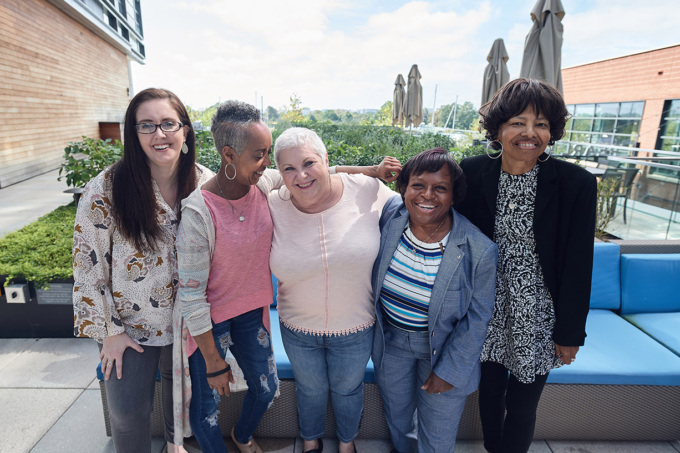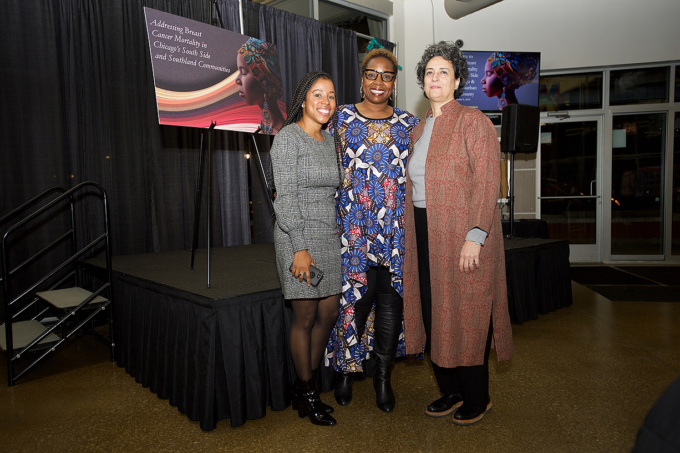Care Planning, Costs

Ashley Freeman outlines a way forward for patients and providers to talk about costs of care.
By Ashley Freeman
“There’s no shame in my game,” said Shirley Bridgett during our Fall 2018 Policy Consortium in response to being asked if she was uncomfortable initiating cost conversations with her provider. She continued that she’d rather have a discussion upfront about the price of her treatment in the privacy of the doctor’s office instead of being surprised at the pharmacy counter by a co-pay amount that she can’t afford.
These cost of care discussions are essential to shared decision making and care planning. In addition to the direct costs of treatment, patients also experience the impact of the costs of their care in their daily lives—transportation, caregiver needs, lost work time, child care, even necessities such as groceries, rent, and utilities. In a recent podcast, Gwen Darien shared an observation about the importance of acknowledging these additional costs: “If you don’t speak about those, you aren’t really delivering holistic care and you also aren’t giving people the opportunity to co-create their care with their healthcare provider.”
Recent research from Public Agenda found that 70% of individuals across the United States believe that doctors and their health care team should discuss prices with patients before providing a service or issuing a referral, but only 28% of patients report having these discussions. In a Patient Advocate Foundation survey, we found over 70% patients said that the most important factor during costs conversations is knowing the resources or options that are available for reducing costs. While we encourage this open dialogue acknowledging the barriers to conversations about costs of care, it’s inadequate not to provide potential solutions and relief to help patients achieve the best affordable care.
It’s one thing to talk about the cost of a treatment. It’s quite another thing for a patient to talk candidly about money in a personal way. Since our health and finances represent some of the most intimate aspects of our personal lives, some people find it hard to initiate these conversations. There may also be social or cultural reasons that cause underserved populations, ethnic minority communities, and low-income individuals to worry about being profiled and thus potentially compromising the quality of care they deserve if they disclose their financial concerns. Incorporating these conversations into the standard procedure for every patient may reassure them that the motive is positive and aims to provide more affordable access to equally effective options. Equipping providers with tools and clear language focused on how to navigate these discussions will be helpful.
The National Patient Advocate Foundation is participating in an outreach effort funded by the Robert Wood Johnson Foundation to raise awareness of the importance of talking about costs and identify all the barriers that might exist. The ultimate goal of this work is to assure that patients have the opportunity throughout their care to tell their providers how their disease and its treatment are having an impact on their health care decisions and their lives.
One important pathway to achieving that goal is to by understanding the often subtle distinctions between costs and personal finances, or money, and by implementing proactive practices to address and overcome this potential barrier.
Our PAF survey also brought to the surface some of the multiple ways financial hardship impacts everyday life and medical decisions. Several patients said that they did not follow medical advice, shifted care location, or completely stopped treatment due to money issues. Nearly 60% of respondents had to dip into their savings to pay for a medical visit, test, or procedure. In addition to an average of 35% of patients who paid medical bills instead of one of their standard monthly financial commitments. These financial burdens on patients may force them to choose between groceries or medication.
If we are looking for a system that is about health, and care, and dignity we need to integrate the impact on patients’ lives that goes beyond just the impact of the disease. We have to close the gap between patients’ desire to talk about the cost of care when making treatment decisions and the social, institutional and cultural barriers to talking about money. Only then can we begin to ensure access to equitable, affordable and quality care for everyone.
Costs, Health Literacy, Insurance, Needs Navigation, Trust
Caregiving, Costs, Insurance
Costs, Insurance
Costs, Equity







